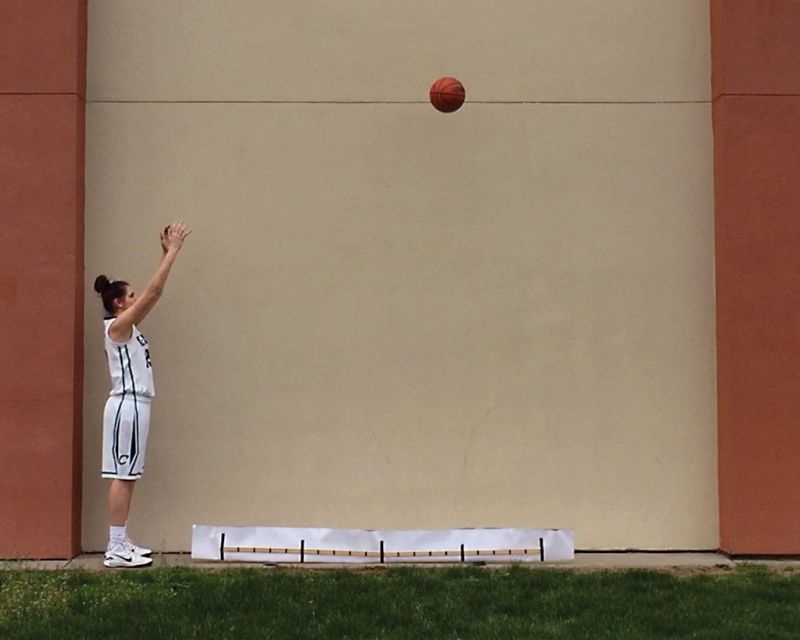
1) Support the phone or camera to keep it still. Use a tripod, tape the phone to a box, or find another way to avoid the jiggle of hand-held video. This will also prevent the tendency to follow the motion with the camera.
2) Record the event in a well-lit area. Outdoors in daylight is the ideal environment, as even an overcast sky can provide more light than can be found indoors. However, going outside is not always practical. Old overhead projectors can provide a bright light, which has no flicker even when filming in high speed. The brighter the lighting, the less motion blur you will see in the video.
3) Point the camera so that its view is normal to the plane of the motion. Moving farther back from the motion reduces parallax error, so that scaling applies to as much of the motion as possible. A telephoto lens is always better than a wide angle lens for reducing parallax.
4) Place a ruler, meter stick, or other scale item in the same plane as the motion being recorded. Having the scale object at that same distance eliminates parallax error in scaling. Again, the scale must be in the same plane as the motion, not behind or in front of the motion. If your scaling is off, any inferred measurements will be off. As a result, a longer scale reference is better than a shorter one.
5) Remove extraneous people and objects from the video before recording. If you plan to use the autotracking feature found in Video Physics and Vernier Video Analysis the background must be very plain. A featureless screen or sky is ideal. Changes in the background will cause the autotracking to lose the target object.
6) If you are going to synchronize the video to sensor data in Graphical Analysis Pro, consider what triggers you will use to sync data with the video. You may want to include a non-experiment-related event, like a toe tapping a force plate, to facilitate synchronization.
7) Practice capturing videos before setting up an experiment to determine that your camera produces file that can be opened by your application.
8) Choose a fast shutter speed (in distinction to the frame rate) to reduce motion blur. Most camera software in phones and tablets will use a shutter speed that is much too slow for rapid motion such as freefall. You can reduce this problem by taking videos outdoors with lots of light. Typical classroom light is not enough to give fast shutter speeds. Specialized video apps are available that allow the shutter speed to be set. One for iOS is called ProMovie.
Demonstrations of some of the techniques for good video collection can be seen in this previously-recorded webinar:
A New View on Physics: Using Video Analysis to Boost Student Engagement
Additional information about cameras is available in our Getting Started with Videos Guide.
Related TILs:
Which camera should I purchase for video analysis?
Logger Pro FAQs for Video-Related Features
Video and image capture do not work in Logger Pro under macOS 10.14 Mojave or newer.
How do I analyze slow-motion or high-speed video in your video analysis apps?
